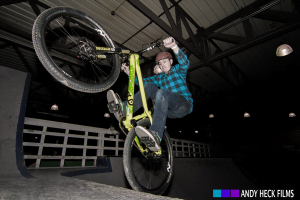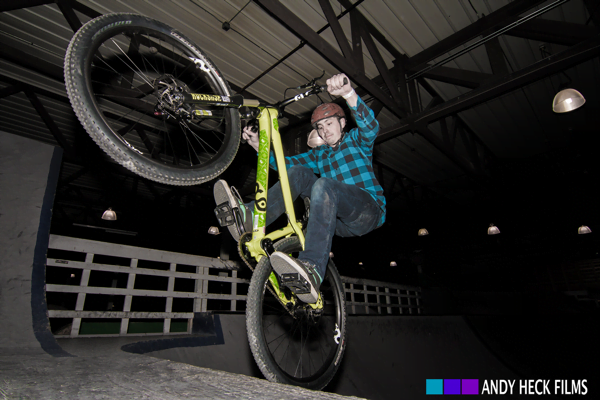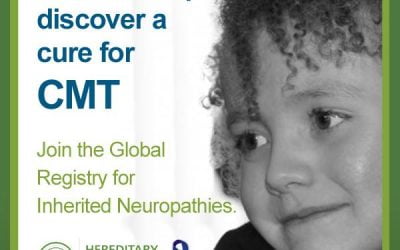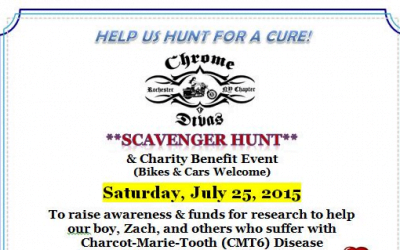 Our Q&A for the Winter CMT Update is Andy Heck. Andy has been diagnosed with Charcot-Marie-Tooth since four and doesn’t let CMT stop him for living his life to the fullest!
Our Q&A for the Winter CMT Update is Andy Heck. Andy has been diagnosed with Charcot-Marie-Tooth since four and doesn’t let CMT stop him for living his life to the fullest!
COURTNEY: Tell us about yourself. Where do you live? What are your favorite hobbies?
ANDY: My name is Andy Heck and I currently live in East Troy, WI. I will soon be relocating to Charlotte, NC for work. I work as a Multimedia Marketing Specialist at Sealed Air. My favorite hobbies are film, bicycling, and cars.
COURTNEY: When were you diagnosed with CMT? What type of CMT do you have?
ANDY: I was diagnosed with CMT1A when I was two years old.
COURTNEY: Do other members of your family have CMT? ANDY: Yes, several people in my family have CMT including 3 aunts, a cousin, my dad and brother.
ANDY: Yes, several people in my family have CMT including 3 aunts, a cousin, my dad and brother.
COURTNEY: What are the challenges you face with CMT?
ANDY: As it pertains to my hobbies, I have several challenges. My doctors always tell me that riding a bike can help me a lot as long as it isn’t any type of high impact riding. The problem there is that I’ve ridden BMX bikes for the past 15+ years. I like going to the skate park and pushing myself to learn new lines and new tricks. I broke my ankle about 12 years ago and since then, I’ve sprained it countless times. A few years ago, I got an AFO for my left leg and that has helped a lot. It immobilizes my ankle, which protects it; however it makes it harder to feel the pedals. The other issue with the AFO is that my leg gets pinched between it and the seat of my bike when I pedal. I solve this issue with duct tape. I also like working on classic cars. I have a 1967 El Camino that I restored several years ago and I’m working on a couple other cars currently. I can usually get the job done when it comes to working on cars, but I’ve noticed that my hands get very sore after using wrenches. It also causes me to lose strength in parts of my hand which makes it very hard to do some of the things after awhile. I just work on things like that in small doses now to help keep my hands functional.
For film, operating the camera becomes difficult. It is hard to get smooth, moving shots when my body doesn’t respond as well as others. I have to find different ways of getting the right shot. It hasn’t happened in awhile, but I have dropped cameras… considering I drop just about everything on a regular basis. Despite the challenges, I find it to be a very cool ability that I have to capture video and photos of people doing what they love to do. It allows me to stay involved in sports and other activities that I might not have the ability to fully participate in anymore.
COURTNEY: How has CMT changed your life?
ANDY: I feel like I’ve lived a pretty normal life. I can typically do all of the things that any other person could. I just know that if I didn’t have CMT, I might be able to do those things better. This really bothers me. I always hear people say that you can do anything you want to as long as you put your mind to it. I agree with this in a way, but the fact is that I have to draw the line somewhere. I like pushing myself physically, but I refuse to push to the point where I’ll really hurt myself. I am constantly balancing my hobbies with risks and that is something I wish I didn’t have to do.
COURTNEY: What advice can you give to others that are affected with CMT?
ANDY: Know your limits but keep pushing yourself. People in general often deal with their own excuses and insecurities that hold them back. Don’t use CMT as an excuse. You are capable of more than you think. You may have to do things a little differently and it may take you a little longer, but that doesn’t mean it is impossible and it doesn’t mean that you won’t get the same satisfaction anyone else would get from the same accomplishment.
COURTNEY: What’s a favorite quote you think of often?
ANDY: “Motion creates emotion.”








0 Comments